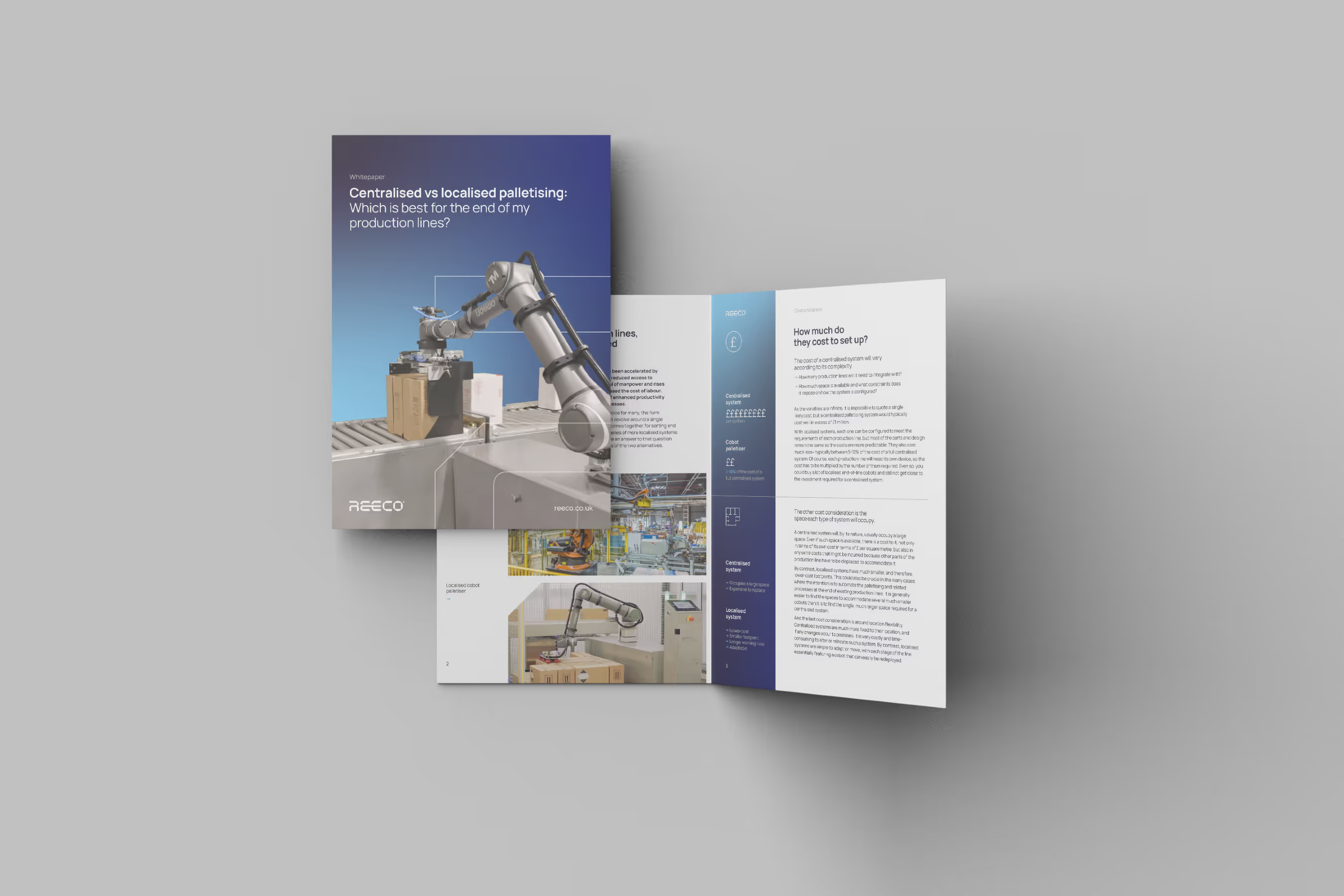Rethink your Company’s Intralogistics Approach with Autonomous Mobile Robots (AMRs)
Intralogistics refers to the management and movement of materials and goods within a facility, and whether it is a warehouse, distribution centre, factory, or another production facility, it can be a significant hurdle to overcome.


But by investing significant time and effort into your facility’s intralogistics, you can:
- Ensure materials/goods are stored and transferred correctly
- Simplify employee tasks
- Optimise workflows
- Improve productivity
- Increase capacity
Intralogistics has evolved a lot over the years, with companies now taking advantage of the latest technology and automation.
This means replacing forklifts and the manual movement of material with automated solutions, and while some companies have turned to Automated Guided Vehicles (AGVs), the superior option available is Autonomous Mobile Robots (AMRs).
With AMRs, companies get all the benefits of AGVs and more without the need to install costly additional infrastructure for guidance.
Instead, AMRs use smart on-board navigation to scan their environment and map your facility, producing a truly autonomous solution to intralogistics.
Challenges of Intralogistics
Warehouses and factories are complicated workspaces.
The constant churn of activity involves a significant amount of resources moving around the facility. Staying on top of what’s needed where in your facility is a headache familiar to managers.
Given the recent boom in eCommerce and customers now expecting rapid and seamless delivery of products, warehouses have to strive for greater productivity in every aspect of their operations.
At a time when demand is soaring, intralogistics challenges have been made worse by the current labour shortage in the UK job market. Fuelled by the same pandemic causing the rise in online purchasing and combined with the effects of Brexit, the increasing shortage of available labour means many companies are struggling to fill their vacancies.
This lack of staff is placing considerable strains on UK industries, including FMCG manufacturing and the warehousing sector. With that in mind, now is the perfect time to update your intralogistics approach, boost your productivity, and discover how automation can help you scale up despite hiring difficulties.
So how does your company currently handle intralogistics?
Manually Performing Intralogistics
Asking employees to perform all of your intralogistics needs has many limitations and is likely only viable in smaller operations. Disadvantages include:
- When performed manually, intralogistics is a labour intensive job and not cost-effective.
- Humans can only carry so much at a time.
- There are significant safety concerns to staff working long hours, often carrying heavy items. This can harm the employee’s health, including Repetitive Stain Injuries (RSIs).
- Working long hours generates a considerable amount of human error in intralogistics tasks. More mistakes mean less efficient workflows and reduced output.
Forklifts
Forklifts are the solution most widely used for intralogistics in the UK. However, while forklifts offer the ability to lift and transport heavy materials over short distances within facilities, they also pose a serious safety risk.
According to the British Safety Council, forklifts are the most dangerous form of workplace transport in the country, accounting for 25% of workplace transport injuries. Roughly 1,300 UK employees become hospitalised with a serious injury from forklift accidents each year.
Finding a safe strategy for combining vehicles and pedestrians in the same high traffic workplace is a pressing issue each company has to solve.
Aside from safety concerns, the Confederation of British Industry (CBI) has identified forklift drivers as one of the areas currently most affected by UK staff shortages.
Automated Guided Vehicles
AGVs are material handling systems that travel autonomously throughout the facility. They are guided in multiple ways, including the use of:
- Magnetic tape – magnetic sensors on AGVs track and follow the magnetic tape.
- Wired navigation – embedding wire paths into the facility’s flooring.
- Laser target navigation – reflective tape is placed around the facility that reflects lasers mounted on the AGV for navigation
While AGVs overcome many obstacles present in intralogistics, they still require installing costly infrastructure around facilities and reduce flexibility as they are restricted to set paths.
Autonomous Mobile Robots (AMRs)
AMRs, on the other hand, can transport a wide range of payloads safely and efficiently without the need for additional navigation infrastructure.
With inbuilt laser systems that scan their environment without the need for extra reflective tape, AMRs map your facility and allow for pathing flexibility.
This means quick deployment while also reducing the upfront costs. Implementing AMRs can:
- Dramatically increase your facility’s productivity
- Eliminate errors and misplaced resources
- Upgrade your material traceability
- Make you less reliant on a volatile job market
- Improve your flexibility with re-configurable pathing
- Reduce workplace accidents and boost Safety with intelligent on-board sensors to detect pedestrians, obstacles, and other AMRs.
- Let your employees focus on tasks that require complex human skills
Developing an intralogistics approach for your facility has to marry the need for the rapid yet safe movement of materials. Automated solutions have to make life simpler for employees on the ground and improve the bottom line for management.
With AMRs, employees and robots can work together safely towards the same goal of boosting output.
_
Speak to the specialists
To find out more about how Reeco can transform your end of line productivity, please call our head office on 01686 621 138, or email sales@reeco.co.uk.

You may also be interested in
Centralised vs localised palletising: Which is best for the end of my production lines?
The move towards end-of-line automation has been accelerated by changes in the labour market post-Brexit. The reduced access to overseas workers has resulted in a smaller pool of manpower and rises in the statutory minimum wage has also increased the cost of labour. This has all added to the existing arguments of enhanced productivity and reliability for switching to automated processes.



.svg)
